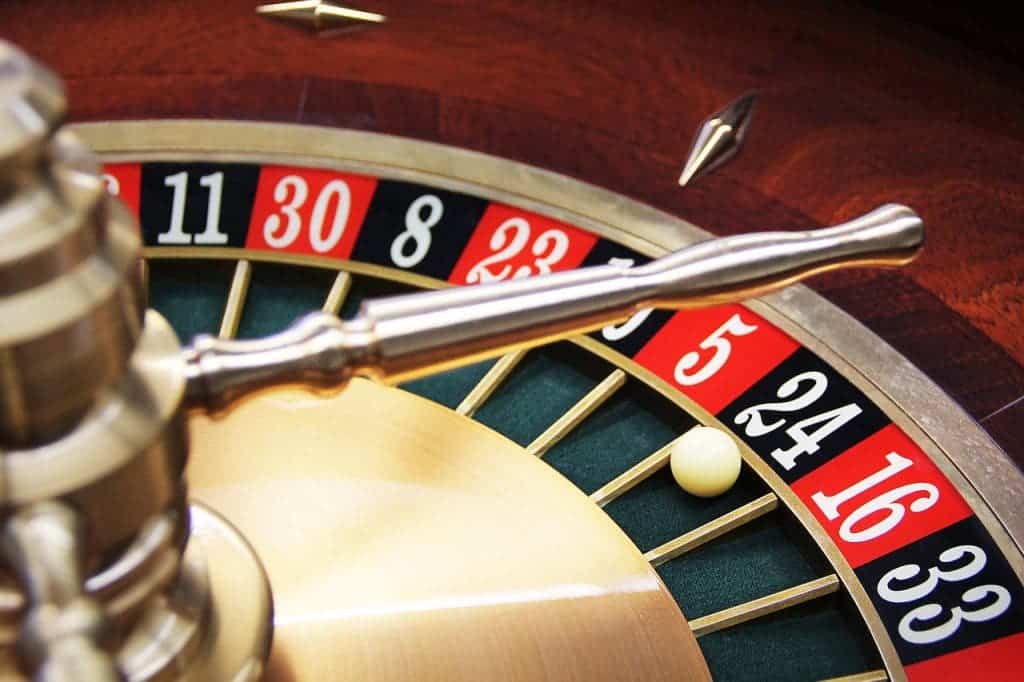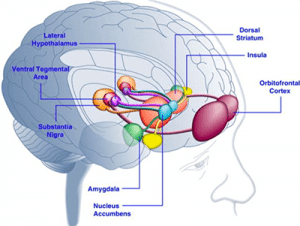What Part Of The Brain Causes Gambling Problems
Addiction — of any kind — is often difficult for many people to understand. But gambling disorder, a compulsion in which no chemicals are actually ingested into the body, can be particularly confounding.
- What Part Of The Brain Causes Gambling Problems Associated
- What Part Of The Brain Causes Gambling Problems Solving

Gambling disorder refers to the uncontrollable urge to gamble, despite serious personal consequences. In 2013, the Diagnostic and Statistical Manual 5 grouped gambling disorder into a category of disorders that also includes substance abuse. This change was made in light of new neuroscience research and brain imaging studies that show that people with gambling disorder have a lot in common with drug and alcohol addicts, including the changes in behavior and brain activity.
This article examines the physiology of gambling disorder, including why it’s hard for some people to resist the urge to gamble and why some people continue to gamble even after the activity ceases to be enjoyable.
Nature can also play a part. A study using brain scans suggests problem gamblers may have lower impulse-control than the. Some steps have been taken to reduce the problems gambling can cause. Studies show that gambling addictions light up the same areas of the brain as drug addictions — and treatment for gambling disorder is usually included in the same type of therapy settings as.
Contents
On the other hand, the prefrontal cortex refers to the part of the brain that’s used in planning and decision making. It makes it significantly harder for problem gamblers to control the impulse to pull the lever of a slot machine just one more time. The role of frontal cortical regions and the mesocorticolimbic system in pathological gambling has been supported by findings in the Iowa Gambling Task, a tool developed to investigate decision-making, particularly that involving risk-reward assessment, in which subjects with substance use disorders and behavioral disorders preferred to choose smaller immediate monetary rewards over larger delayed rewards (Petry, 2005). Further evidence that gambling and drugs change the brain in similar ways surfaced in an unexpected group of people: those with the neurodegenerative disorder Parkinson's disease.
- 8 References
The Brain’s Reward Network

The genesis of gambling disorder begins in the reward network of the brain, which consists of the ventral striatum (also known as the “reward hub”) and the medial prefrontal cortex (mPFC). The role of the reward hub is to recognize the cues that suggest when a reward may be coming. This part of the brain is activated when a reward is anticipated, such as when your dog is coming to the door to greet you or when you smell a tasty dinner cooking in the oven.
Images of brain activity in people with gambling disorder and substance addictions show that they have less activity in the reward hub when anticipating rewards. This suggests that people with addictions may process rewards differently than others. It may also explain why they seek out unnatural rewards, such as gambling, alcohol or drugs, to experience pleasure.
The role of the mPFC is to stop, or inhibit, a response. This braking action is important when the “go” signal encourages one to charge ahead toward something the brain associates with pleasure.
Research shows that the impulse control action or the “brake” does not work well in people with gambling disorder. Compared to those without addiction, there is less activity in this area of the brain. These individuals pay less attention to the “stop” signal and are less able to stop the pursuit of pleasure. When it comes to gambling, this means those individuals will have difficulty stopping.
The Habit Grows — Even While Gambling Ceases to be Fun
People with gambling disorder continue to gamble even when it no longer brings them pleasure. This behavior stems from parts of the brain that establish habits.
Habit formation occurs in the dorsal striatum, also known as the “habit hub.” Over -indulgence in pleasurable behaviors causes brain activity to shift from the reward hub to the habit hub. Typically, these two parts of the brain work in tandem, so that habits can be developed out of pleasurable experiences.
However, for individuals with gambling disorder, it seems that these two areas of the brain stop working in harmony. When the pursuit of pleasurable experiences becomes too strong, a habit begins.
For those with gambling disorder, these brain changes create several impacts. The first is that people with gambling disorder become overly aware of environmental gambling cues. For example, when a person gambles, they begin to associate related cues, such as the sounds of a slot machine, the sight of favorite numbers, or the feel of the felt on a poker table, with feelings of pleasure that gambling brings. The more one gambles, the more the reward hub lights up.
However, the pleasure gradually decreases as the brain learns what it needs to do to derive a reward. The better these behaviors are learned, the less they light up the reward hub. Over time, the behavior becomes a habit, meaning less thought goes into the behavior and less accompanying pleasure.
In addition to the decrease in pleasure derived from gambling, research shows that people with gambling disorder are also more likely to shift their attention to gambling cues than people who have more neutral feelings about gambling. This is why those with gambling disorder will be quick to notice a gambling-related ad.
Why Gambling Cues Produce Urges
As the habit hub overrides the reward hub, gambling cues are processed ever more quickly, ultimately producing powerful urges to gamble. For example, the mere sight of money or hearing about the latest high-paying lottery game can be gambling triggers.
From the time of a first pleasurable gambling experience to the time a gambler becomes “addicted,” the feeling of “liking” decreases while a feeling of “wanting” increases. This explains why disordered gamblers feel a strong desire to gamble even while it’s no longer fun or entertaining. At this point, the activity of gambling functions to ease the discomfort of urges.

Why the Brain Struggles with Gambling Urges
The urge to gamble haunts many as they attempt to stop or modify their gambling habit. Because of the complicated processes at work in the brain, it can be difficult to ignore these urges.
In addition to the takeover by the habit hub and the inability of the reward hub and habit hub to work together appropriately, a third part of the brain plays a role in urges. The insula is involved in subjective emotional experience that allows one to process physical sensations, such as pain, temperature, hunger and thirst, so they may be used to influence decision making. The insula is also responsible for driving someone to do something about urges.
Studies have shown that compared to people without an addiction, individuals with gambling disorder can cycle into an increased response to gambling cues while unsuccessfully trying to regulate the negative emotions stirred up by these cues, which then leads to prolonged gambling activity.
The Challenges in Rediscovering Pleasure
Strong gambling urges can hamper those in the early stages of recovery from disordered gambling. These urges are so strong that many people find that activities that used to bring them pleasure or excitement, such as socializing with friends, participating in hobbies or eating food, no longer do so.
This condition of not being able to feel pleasure is called anhedonia. Disordered gambling can lower natural mood states such that rewards that used to provide pleasure don’t anymore. This is consistent with brain imaging studies of people in early recovery from substance abuse. When presented with pictures of mouth-watering food or positive social situations such as family gatherings, brain scans of individuals with anhedonia showed less activity in the reward hub of the brain than those with lower levels of anhedonia.
The Risk of Addiction Switching
Reports of people switching from one type of addiction to another (also known as substitution or cross-addiction) are not uncommon. For example, when a person stops drinking, he may find himself smoking more cigarettes, binging on certain foods or gambling excessively. This unfortunate occurrence can occur because of reduced activity in the reward hub and their ability to “brake,” making a person vulnerable to other unhealthy rewards to satisfy urges. The result could be a new pattern of repeated rewarding behavior that steals one’s attention, opening the door to a new addiction.
The Good News: Abstinence Can Reduce Gambling Urges
The good news is that brains are continually changing. Therefore, the processes that create addiction can be reversed to a varying degree over time. A study published in Neuropsychopharmacology showed that the brains of individuals with substance-based addictions changed in response to non-addiction cues. This means that individuals recovering from an addiction can start to enjoy natural rewards again. However, because these changes can take time to occur, it emphasizes the importance of continuing to practice previously enjoyable hobbies, to try out new activities in new settings, and to be around those who engage in positive behaviors.
Given the time it takes to build new brain processes — and a lasting recovery — individuals should consider the importance of cultivating healthy responses to non-gambling rewards. This can help protect them from the dangers of cross addiction and relapse, and create a rich, meaningful and rewarding life over the long term.
References
- Gambling Addiction and the Brain, Mary Bates, Sept 2015, Brain Facts.
- Disruption of Reward Processing in Addiction: An Image-Based Meta-analysis of Functional Magnetic Resonance Imaging Studies, Luijten et. al., (2017) JAMA Psychiatry, 74(4), 387-398.
- Similar hyporesponsiveness of the dorsomedial prefrontal cortex in problem gamblers and heavy smokers during an inhibitory control task. De Ruiter et. al., (2012). Drug and alcohol dependence, 121(1), 81-89.
- Brevers et. al., (2011). Psychology of addictive behaviors, 25(4), 675; Brevers et. al., (2011). Journal of behavior therapy and experimental psychiatry, 42(3), 265-269.
- Dissociable roles of ventral and dorsal striatum in instrumental conditioning, O’Doherty et. al., (2004). Science, 304(5669), 452-454.
- Evidence of Anhedonia and Differential Reward Processing in Prefrontal Cortex Among Post-Withdrawal Patients with Prescription Opiate Dependence, Huhn et. al., (2016), Brain Research Bulletin, 123, 102-109.
- Neurofunctional Reward Processing Changes in Cocaine Dependence During Recovery, Balodis et al., (2016). Neuropsychopharmacology, 41(8), 2112-2121.
Bill Stein for Northstar Problem Gambling Alliance
What Part Of The Brain Causes Gambling Problems Associated
Last Updated on July 11, 2019